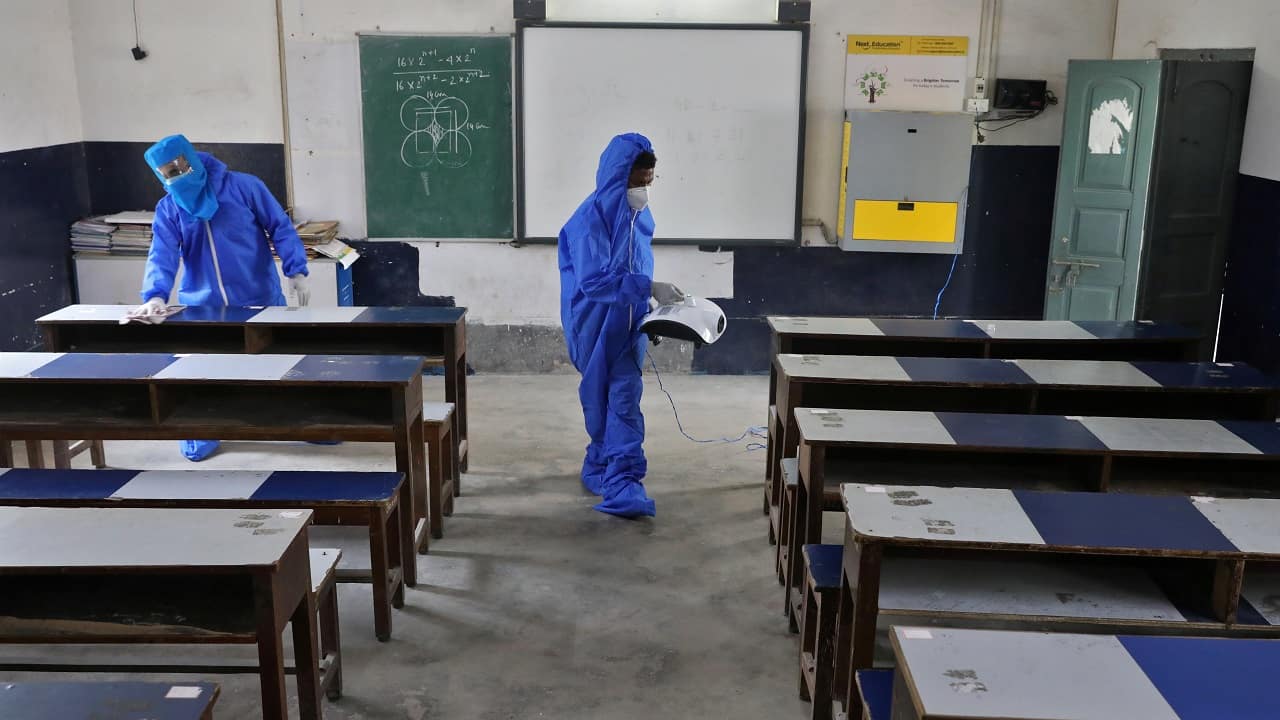The Ministry of Education has issued detailed guidelines about the standard operating procedures (SOPs) that will have to be followed in schools once physical classes resume amid the novel coronavirus pandemic.
Under the latest 'Unlock 5.0' guidelines, schools and coaching institutes were allowed to reopen in a phased manner from October 15. States and Union Territories have been given a free hand to decide whether they want to reopen these institutions. Thus, states have been empowered to decide if they want to keep schools shut.
On March 16, the Centre had announced closure of all educational institutions, including schools, colleges and universities, to prevent the spread of COVID-19.
Here are states allowing schools to reopen:
Uttar Pradesh: Classes 9 to 12 of schools outside containment zones will reopen from October 19. Classes will be held in shifts amid necessary safety protocols.
Punjab: Students of classes 9 to 12 will be permitted to attend schools without making attendance compulsory. However, online classes will remain the preferred method of teaching.
Sikkim: The state government has allowed reopening of all schools in a graded manner starting from October 19. Students of classes 11 and 12 will be permitted to attend schools first, on voluntary basis.
Gujarat: The Gujarat government is likely to consider reopening schools only after Diwali, a senior official has said.
Vinod Rao, secretary, state education department, said there was no immediate plan to reopen schools.
"We are not doing this immediately. We will consider reopening schools only after Diwali (vacation) after assessing the coronavirus situation," Rao told.
Uttarakhand: Schools in Uttarakhand will reopen on November 2 for classes 10 and 12. Resuming courses in schools for other classes will depend on how things play out once they reopen for standard 10 and 12. Online classes will continue for others until then.
States that are not allowing schools to reopen:
Goa: The Goa government will take a decision on reopening schools only after consulting all the stakeholders including teachers, Chief Minister Pramod Sawant has said.
Teachers' associations are opposed to restarting physical classes immediately, fearing it would be impossible to maintain social distancing in schools.
Amid rising coronavirus cases, the safety of students is of paramount importance, Sawant told.
Delhi: All schools in the national capital will remain closed till October 31 in view of the COVID-19 pandemic, Delhi government officials said on Sunday.
The Delhi government had earlier extended the school closure till October 5, though the Centre had permitted calling students of classes 9 to 12 to schools on a voluntary basis from September 21.
"The Directorate of Education (DoE) has been directed to extend the ongoing closure of schools till Oct 31. Formal orders to this effect will be issued by DoE tomorrow," an official at the Deputy Chief Minister's office said.
Deputy Chief Minister Manish Sisodia also holds the education portfolio.
Maharashtra: As COVID-19 cases continue to rise in Maharashtra, state School Education Minister Varsha Gaikwad said schools will not reopen in the state before Diwali.
Maharashtra has reported 15.8 COVID-19 cases and over 41,900 deaths due to the disease so far.
Chhatisgarh: The Chhattisgarh government has said schools in the state will continue to remain closed till further orders in view of the COVID-19 pandemic, a move welcomed by many parents.
Click here for Moneycontrol’s full coverage of the novel coronavirus pandemic
Discover the latest Business News, Sensex, and Nifty updates. Obtain Personal Finance insights, tax queries, and expert opinions on Moneycontrol or download the Moneycontrol App to stay updated!










